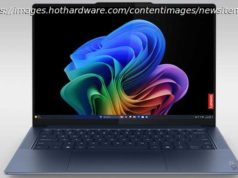Space rocket-inspired cooling helps Asus squeeze a GeForce GTX 1080 where no GPU has gone before., Atomic
Space rocket-inspired cooling helps Asus squeeze a GeForce GTX 1080 where no GPU has gone before. Thin. Quiet. Powerful. The holy trinity of gaming laptops. It used to be a pipe dream — either you had a skinny, silent machine that struggled with anything more demanding than Solitaire, or you had huge, bulky machines with powerful GPUs — and fans that sounded like a hurricane to keep them cool. The Zephyrus might be the first machine to break that trend: it’s only 17mm thick, weighs less than 5lbs, but somehow manages to squeeze a GeForce GTX 1080 graphics chip inside that puts it almost on par with a desktop PC. How? Well, it’s apparently thanks to space rockets. Yes, really. The Zephyrus is the first laptop we’ve seen that’s built according to Nvidia’s Max-Q design. In fancy-pants science talk, this is the point where aerodynamic stress on a space rocket is at its maximum, so you can dial down the thrust and still break out of the atmosphere. But we’re talking about laptops, not rockets. Here, it’s an attempt to maximise efficiency out of the graphics card, instead of going for all-out performance, in order to avoid diminishing returns and squeeze the most amount of power out of something that’s still thin and light enough to take on the move. Basically, it means the GTX 1080 inside the Zephyrus uses half the power of an identical chip in any gaming laptop you can buy right now, but manages 90% of the performance. WIthout also sounding like a hairdryer. Nvidia and Asus have worked together to make sure the cooling fans never spin up past 40db, making it significantly quieter than your usual gaming laptop. It stays impressively temperate, too, averaging a mere 40 degrees even when you’re gaming. That is, quite literally, cool. It wasn’t just a case of adding more air vents until the Zephyrus had more holes than a colander, though. Asus has shifted the keyboard towards the front edge of the laptop, bumping the touchpad over to one side and leaving the whole back half of the machine focused on cooling. It draws air in through the top and sides, then exhausts it out of the back. Open the screen and a hinge pops open at the back, raising the laptop by another 6mm and leaving plenty of room for air to escape the chassis. It’s a really neat trick, and one that’ll mean you can game all day without overheating. The lack of anywhere to lean your mitts might take some getting used to, but it wasn’t as uncomfortable to use as I was expecting. A wrist rest might help if you were planning to use one to write a novel, but for gamers, it’ll easily get the job done. The Zephyrus is pretty restrained for a gaming laptop, with an all-metal build that looks pretty sleek — even with the massive Republic of Gamers logo on the lid. Asus has added a few flourishes, like the gold edging around the sides, but in case you’d forgotten there was a GTX 1080 underneath the hood, the keyboard is fully backlit. With customisable RGB lightning, no less. The 15.6in screen is gaming-grade, too. Asus has gone for an IPA panel and kept the resolution down to a sensible 1080p, instead of racing for resolution supremacy and fitting a 4K display. That means the GPU won’t be working overtime just to render the Windows desktop, and can put its power to good use in games. It’s a G-Sync panel, as well, with a 120Hz refresh rate. That makes it perfect for games that rely on quick reflexes, like long-time eSports king Counter Strike, or current Blizzard darling Overwatch. Should you switch to something more intensive, you won’t notice if the frame rate dips below 60 thanks to the adaptive refresh rate. Of course, if you want more pixels, you can plug it into a 4K telly and the GTX 1080 will still be able to cut the mustard. It’ll handle HDR over HDMI 2.0, too, although the screen itself can’t manage all that extra dynamic range. There’s plenty of room around the sides for connectivity, despite the skinny dimensions. You get multiple USB ports, including USB-C, a 3.5mm headphone jack, and an HDMI video output. No wired Ethernet, though — which seems like a missed trick. Serious gamers don’t do Wi-Fi, do they? Underneath, though, the Zephyrus is every bit the monster machine. As well as the GTX 1080 (which has 8GB of dedicated video RAM) , the top-spec version has a 7th generation Intel Core i7-7700HQ processor, up to 24GB of RAM, and four M.2 PCI ports for super-fast SSD storage. So yeah, it’ll play anything you can chuck at it — including VR. Gaming laptops that you could comfortably carry away from a desk have been a long time coming. The Zephyrus is the closest we’ve come yet, thanks to an industry-wide partnership with Nvidia that’ll also see models from other manufacturers getting the slimming treatment. It’s immensely powerful, but manages to stay cool and quiet thanks to a clever combination of hardware and software. The design looks on point, the screen is purpose-built for gaming, and although the keyboard position feels a bit marmite right now, I reckon it’ll make a lot more sense once I’ve clocked up some serious gaming time on one. Sure, it’s expensive: $2699 in the US. But if you want the absolute best combination of performance and portability, the Zephyrus will take some beating. I can’t wait to give one a full review before it goes on sale later this month.






